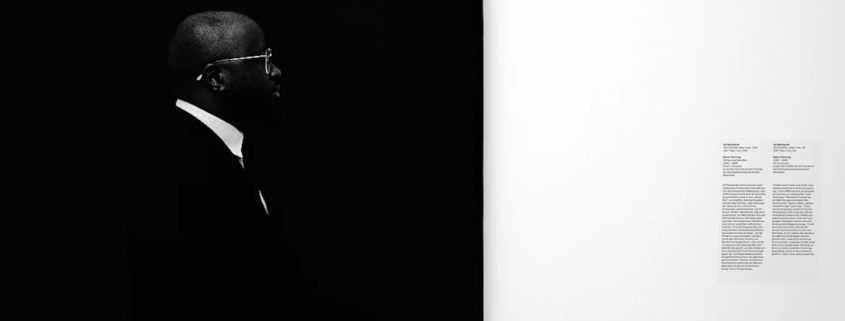“Joseph” – The Unexpected Parallels Between Photography and Negotiation
Some of you know I’m an various fields action-sports enthusiast—photography, to me, once seemed a pastime reserved for after a second heart attack, if ever.
Yet, Julia Anna Gospodarou’s bestselling “From Basics to Fine Art” transformed me into a hobbyist photographer far sooner than expected. My recent entry, “Joseph,” for this year’s int. “Black & White Photography Awards”, sparked a revelation: doesn’t that title—”From Basics to Fine Art”—echo the journey many of us navigate in mastering negotiation?
Comparing my Negotiation Preparation with my Photography Workflow unveiled striking, often surprising connections I’m eager to share with you.
Core Parallels
1. Approaching the Subject from Multiple Angles
Photography: You circle a subject, testing perspectives—adjusting your stance, experimenting with angles—to capture its essence in the frame.
Negotiation: Likewise, negotiators probe diverse viewpoints—yours, your counterpart’s, and external dynamics—to carve a path to agreement. Like a photographer framing the perfect shot, a negotiator pivots strategically to uncover the stance that resonates most powerfully.
2. Adapting to Shifting Light and Mood
Photography: Light ebbs and flows, reshaping a scene’s emotional tone. You tweak settings or timing to seize the mood you envision.
Negotiation: In negotiation, the “light” is the emotional and contextual atmosphere—tensions may flare, or new insights may illuminate the dialogue. A deft negotiator, akin to a photographer mastering exposure, modulates tone and pace to sustain a climate ripe for progress.
3. Physicality and Strategic Positioning
Photography: The craft can demand physicality—scaling abandoned structures or contorting into extreme positions for the shot. Where you stand matters.
Negotiation: Physicality plays a role here too: body language, eye contact, even seating arrangements. Positioning—whether at the table or within the conversation—can confer advantage or cultivate collaboration.
4. Proactive Precision and Attention to Detail
Photography: In street photography, you anticipate movement—positioning yourself, waiting for someone in matching colors to cross the frame—while fine-tuning settings with exactitude.
Negotiation: Negotiators preempt their counterpart’s moves, crafting responses with care, attuned to nuances like contract terms or subtle cues. Both hinge on foresight and meticulous execution to seize fleeting opportunities.
5. Patience Paired with Mental Agility
Photography: Patience—awaiting the ideal light or moment—blends with readiness to act when the scene aligns perfectly.
Negotiation: Negotiators bide their time for the right moment to offer or concede, remaining vigilant to capitalize on shifts. In both, timing and alertness can be decisive.
6. Reflection and Refinement
Photography: Post-shoot, you scrutinize your images, rethinking scenes and processes to elevate your next session.
Negotiation: After a deal, reflection—assessing what succeeded, what faltered, and how the dynamic unfolded—sharpens your craft. Both thrive on a cycle of action, analysis, and growth.
Subtle, Yet Profound Connections
Framing: In photography, framing dictates what’s included or omitted, sculpting the viewer’s perception. In negotiation, how you frame your proposal shapes your counterpart’s lens—both crafts turn on what you emphasize or obscure.
Exposure: Photographers balance light for clarity and range; negotiators calibrate how much to reveal—too much risks weakness, too little undermines trust. Both seek equilibrium amid dynamic variables.
Focus: A photographer sharpens the subject that matters most, softening distractions. Negotiators prioritize key issues, letting lesser points fade—focus drives the narrative in each.
Composition: Using principles like the rule of thirds, photographers arrange elements for harmony or tension. Negotiators structure arguments and pace discussions for impact—both orchestrate parts into a unified whole.
The Decisive Moment: Henri Cartier-Bresson’s concept of the perfect instant in photography mirrors negotiation’s tipping point—when resistance yields or a deal crystallizes. Recognizing and acting on it is paramount.
Storytelling: A compelling photo speaks without words, evoking meaning through visual cues. Negotiators craft narratives to persuade or connect—both distill complexity into resonant messages.
Capturing Emotion: Photographers freeze a scene’s mood or a subject’s expression in time. Negotiators read and steer emotions—theirs and others’—with empathy, not artifice, forging rapport that lingers. Emotions, processed swiftly by the amygdala, etch memories deeper than logic, rendering a negotiation’s subjective value—how parties feel about the outcome—more enduring than its terms. While facts sway the mind, emotions anchor commitment, ensuring lasting resonance.
A Deeper Synthesis
Photographers and negotiators are architects of perception.
Consider photography’s exposure triangle—aperture, shutter speed, ISO—balancing light to reveal beauty. Negotiation mirrors this, harmonizing concessions, timelines, and relationships to illuminate value.
Exceptional photography unveils hidden meaning in the mundane through asymmetric, unique angles; masterful negotiation, as Dr. Keld Jensen teaches f.e., uncovers Asymmetrical Value—leveraging non-obvious interests to mutual gain.
Both are truly arts and sciences, demanding strategic vision, creativity, adaptability, patience and relentless learning, refining approaches.
Nowadays, for me, photography transcends a hobby—it’s a crucible for honing negotiation skills as well. It sharpens my creativity, my adaptability, and laser precision focus, enhancing my work as a strategist and advisor with a caring eye to smallest detail.
We construct reality through deliberate choices—what to highlight, what to veil, and how to craft the final “print” that leaves an indelible mark.
Mastery in either field blends art, science, and the nuanced flow of human dynamics.
“Joseph” didn’t claim first place in the international photography contest, but it landed in the Top 10—a fitting milestone.
Isn’t that a worthy aspiration for both photography and negotiation alike?


Leave a Reply
Want to join the discussion?Feel free to contribute!